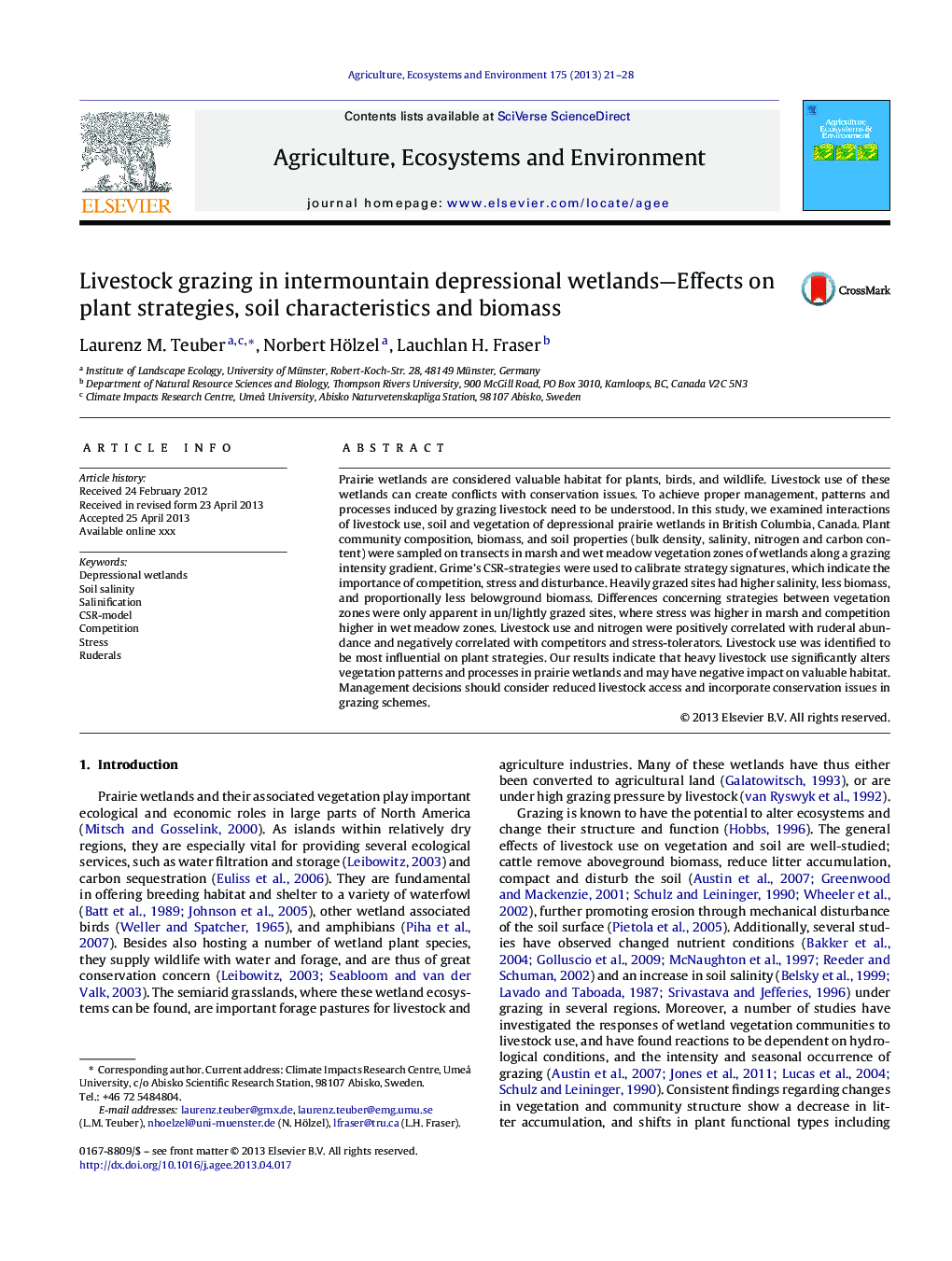| Article ID | Journal | Published Year | Pages | File Type |
|---|---|---|---|---|
| 8488117 | Agriculture, Ecosystems & Environment | 2013 | 8 Pages |
Abstract
Prairie wetlands are considered valuable habitat for plants, birds, and wildlife. Livestock use of these wetlands can create conflicts with conservation issues. To achieve proper management, patterns and processes induced by grazing livestock need to be understood. In this study, we examined interactions of livestock use, soil and vegetation of depressional prairie wetlands in British Columbia, Canada. Plant community composition, biomass, and soil properties (bulk density, salinity, nitrogen and carbon content) were sampled on transects in marsh and wet meadow vegetation zones of wetlands along a grazing intensity gradient. Grime's CSR-strategies were used to calibrate strategy signatures, which indicate the importance of competition, stress and disturbance. Heavily grazed sites had higher salinity, less biomass, and proportionally less belowground biomass. Differences concerning strategies between vegetation zones were only apparent in un/lightly grazed sites, where stress was higher in marsh and competition higher in wet meadow zones. Livestock use and nitrogen were positively correlated with ruderal abundance and negatively correlated with competitors and stress-tolerators. Livestock use was identified to be most influential on plant strategies. Our results indicate that heavy livestock use significantly alters vegetation patterns and processes in prairie wetlands and may have negative impact on valuable habitat. Management decisions should consider reduced livestock access and incorporate conservation issues in grazing schemes.
Related Topics
Life Sciences
Agricultural and Biological Sciences
Agronomy and Crop Science
Authors
Laurenz M. Teuber, Norbert Hölzel, Lauchlan H. Fraser,
